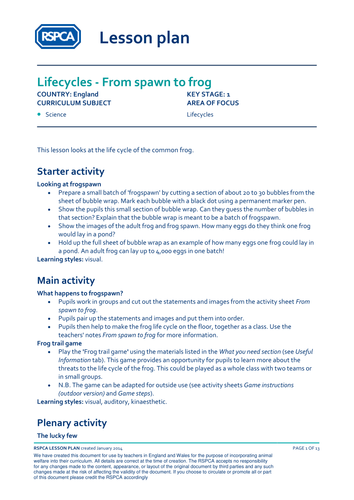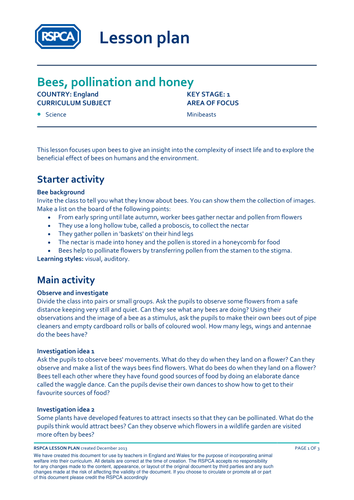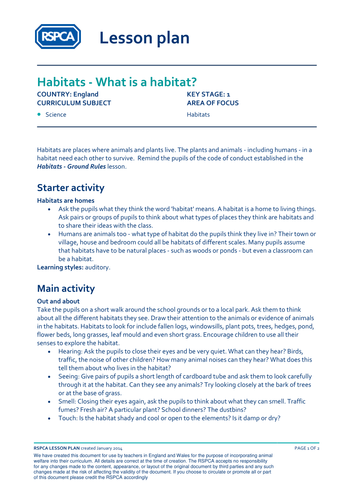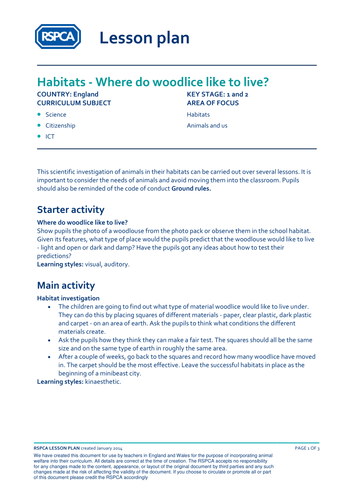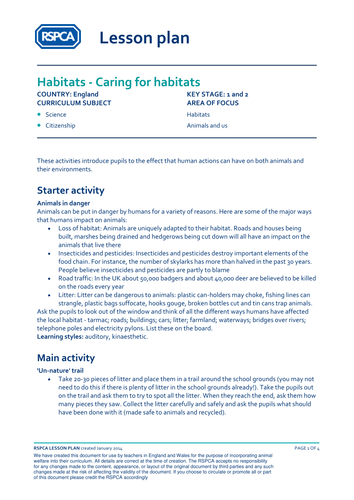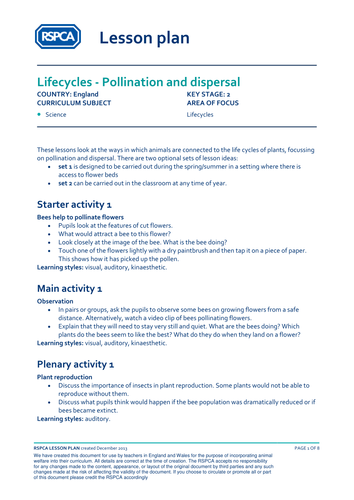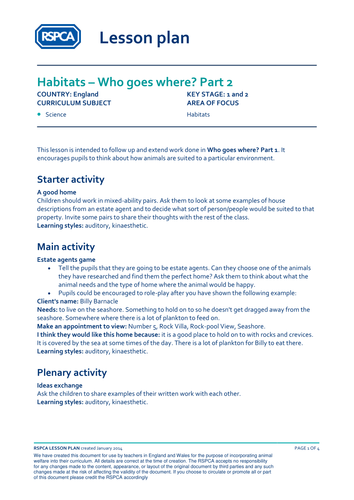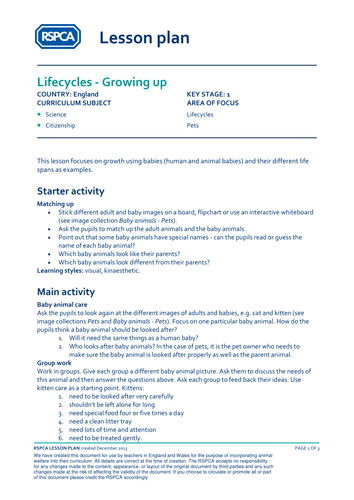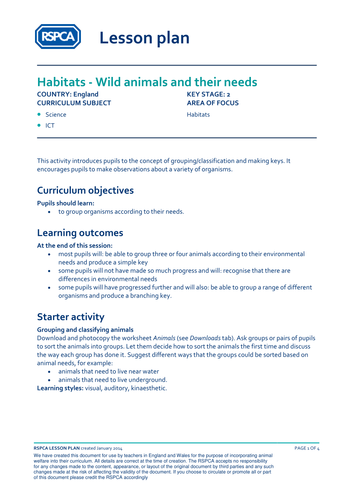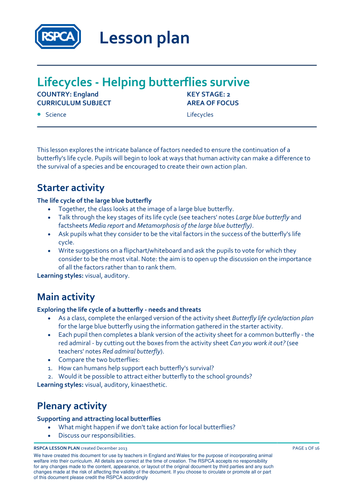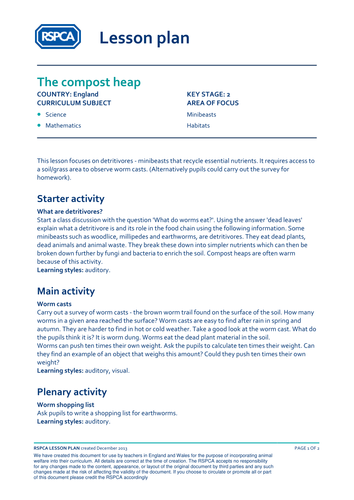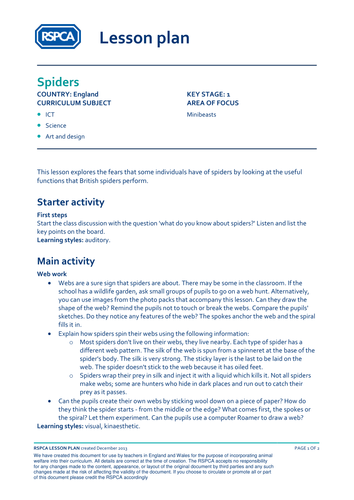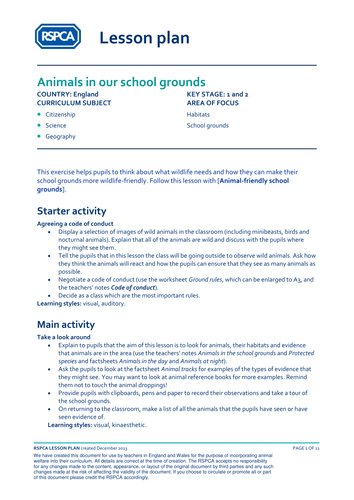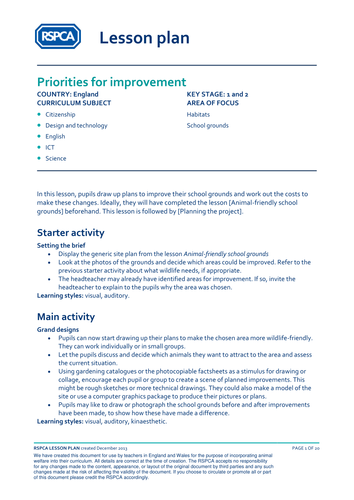60Uploads
58k+Views
52k+Downloads
Primary science

Lifecycles - From spawn to frog
This lesson looks at the life cycle of the common frog. Activities, teachers' notes and work sheets included.
Pupils should learn: what a life cycle is, to appreciate that a successful life cycle is dependent upon certain factors including food and the correct environment and why caring for the environment is important.

Minibeasts - Bees, pollination and honey
This lesson focuses upon bees to give an insight into the complexity of insect life and to explore the beneficial effect of bees on humans and the environment. Activities included.
Pupils should learn:
1. to observe and make a record of an animal.
2. that animals and the environment should be treated with care and sensitivity.

Habitats - What is a habitat?
Habitats are places where animals and plants live. The plants and animals - including humans - in a habitat need each other to survive. Activities included.

Habitats - Where do woodlice like to live?
This scientific investigation of animals in their habitats can be carried out over several lessons. It is important to consider the needs of animals and avoid moving them into the classroom. Activities included.

Habitats - Caring for habitats
These activities introduce pupils to the effect that human actions can have on both animals and their environments.

Habitats - Pond frogs role-play
These activities, both role play and script writing, look at how human activity in the environment can pose dangers to living things.

Lifecycles - Pollination and dispersal
These lessons look at the ways in which animals are connected to the life cycles of plants, focusing on pollination and dispersal. There are two optional sets of lesson ideas. Set 1 is designed to be carried out during the spring/summer in a setting where there is access to flower beds. Set 2 can be carried out in the classroom at any time of year. Teachers' notes and activity sheets included.

Habitats - Who goes where?
These activities introduce pupils to the concept of gathering evidence on different animals' and plants&' habitats through investigation. Then encourages pupils to think about how animals are suited to a particular environment.

Lifecycles - Growing up
This lesson focuses on growth using babies (human and animal babies) and their different life spans as examples.
Activities included. Pupils should learn:
to make and communicate observations and comparisons of humans and other animals,
to match young and adults of the same animals
and to know that all animals should be treated with respect.

Habitats - Wild animals and their needs
This activity introduces pupils to the concept of grouping/classification and making keys. It encourages pupils to make observations about a variety of organisms.

Lifecycles - Helping butterflies survive
This lesson explores the intricate balance of factors needed to ensure the continuation of a butterfly's life cycle. Pupils will begin to look at ways that human activity can make a difference to the survival of a species and be encouraged to create their own action plan.
Teachers&' notes and activity sheets included.

Minibeasts - The compost heap
This lesson focuses on detritivores - minibeasts that recycle essential nutrients. It requires access to a soil/grass area to observe worm casts. (Alternatively pupils could carry out the survey for homework).
Activities included.
Pupils should learn the role of detritivores and their place in the food chain.

Minibeasts - Spiders
This lesson explores the fears that some individuals have of spiders by looking at the useful functions that British spiders perform. Activities included.
Pupils should learn that there are different kinds of plants and animals in the immediate environment

Habitats - The web of life
This lesson looks at simple food chains and encourages pupils to recognise the importance of each animal within the chain. Activities included.

Minibeasts - Attitudes to minibeasts
This lesson aims to explore pupils' attitudes about minibeasts and allows them to develop a minibeasts code. Activities and worksheets included.
Pupils should learn: 1. that animals should be treated with care and sensitivity. 2. to appreciate that humans have a responsibility to ensure the well-being of all animals, including minibeasts.

School Grounds 1: Animals in our school grounds
This exercise helps pupils to think about what wildlife needs and how they can make their school grounds more wildlife-friendly. Follow this lesson with [Animal-friendly school grounds].
Activities, teachers' notes and worksheets included.

School Grounds 2: Animal-friendly school grounds
This exercise helps pupils to think about what wildlife needs and how they can make their school grounds more wildlife-friendly. Follow this lesson with [Priorities for improvement].
Activities, teachers' notes and worksheets included.

RSPCA and Volkswagen Van Design Competition
This competition is designed to deliver a fun way of learning about all aspects of the RSPCA and applying that learning to design using art techniques while offering an opportunity for children to explain their design in an accompanying letter to be sent along with their entry. The competition closes in September so this could be a lesson plan for the end of the 2013/14 term or the beginning of the 2014/15 term

School Grounds 3: Priorities for improvement
In this lesson, pupils draw up plans to improve their school grounds and work out the costs to make these changes. Ideally, they will have completed the lesson [Animal-friendly school grounds] beforehand. This lesson is followed by [Planning the project].
Activities, teachers' notes and worksheets included.

Habitats - What do birds prefer to eat?
This science investigation of animals in their habitats can be carried out over several lessons. It is important to consider the needs of animals and avoid moving them into the classroom. Activities included.

